The 1930s has the most growth in fashion and modernization of fashion. Even though it was a depression-era and the economy was not that good. Fashion saw immense evolution during this time. Most of the dresses used to get inspiration from Hollywood actors and actresses at that time.
Here we are going to talk about the different kinds of 1930’s dress patterns. These are some of the designs and styles that were trending back in the days. But you will surely notice some of them being worn in modern times as well because the ’30s inspire most of the dresses of recent times.
So, let’s get on with the different patterns of 1930’s dresses.
1930’s fashion
Before we dig deep into the details of the 1930’s dress patterns, let’s go through some necessary information about 1930’s fashion.
Well, the basic information of 1930’s dresses was that they used to run quite long on the height. Whereas in the ’20s women were leaning towards shorter clothes, in the 30’s the trend completely changed. Another crucial part of 1930’s fashion was fitting. Most of the clothes had a tight-fitting, which actually changed from loose-fitting in the ’20s. Gowns and floral dresses were becoming a popular choice back then.
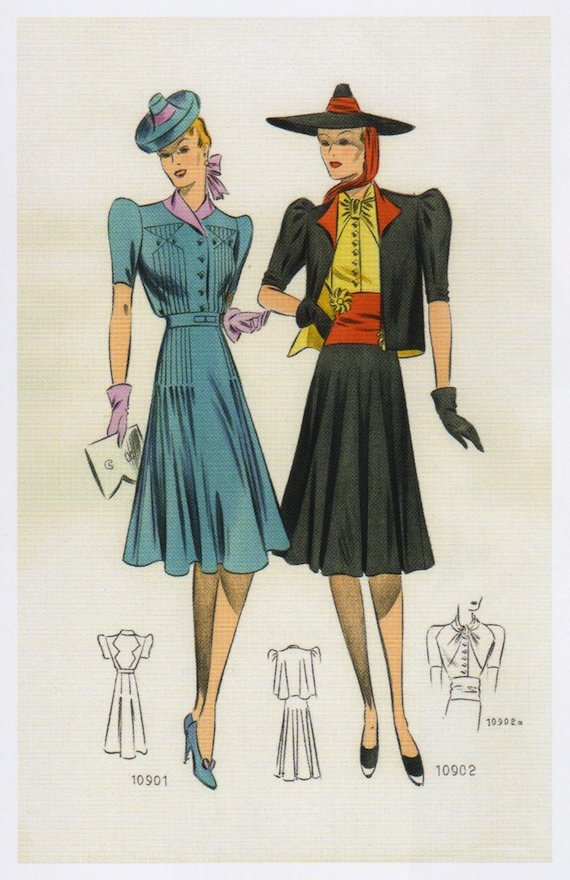
Most of these dresses used to be inspired by Hollywood movie stars. They used to have their own independent style, and people mostly copied those styles. At that time, women were leaning towards a more feminine choice of clothing.
For the men, fashion took the most significant leap in this era. Here men were introduced to tuxedos. Also, the trend of wearing baggy pants was over around this time. But whatever style or fashion men are adopting today mostly comes from the 1930’s men’s fashion.
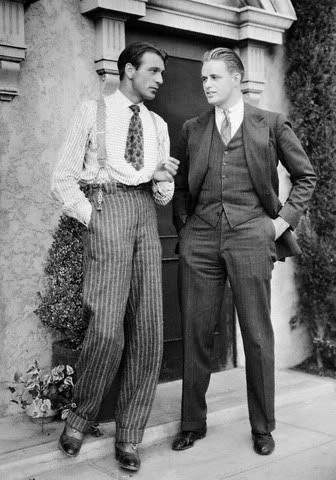
Overall, the 1930’s fashion was the classiest time for dresses and fashion. Even though people didn’t have much money in that situation, they found alternative ways to look good. Eventually, that became the base for modern fashion.
1930’s women dress patterns
In the past, women had different dresses for different activities at different times of the day. They had day dresses, evening dresses, afternoon dresses, house dresses, morning dresses, and many more. The evening dresses mostly used to be gowns, especially for the women who could afford expensive dresses.
The afternoon or day dresses were mostly floral dresses with frocks and skirts of a different type as the economy was getting worse women moved towards dresses that would work for different purposes. They tried getting dresses that would work with different kinds of daily activities throughout the day. The day dresses were used for running various errands such as going to the market or go shopping or taking a walk around the place.
The afternoon dresses were mostly used for tea parties. The floral pattern frock was a trendy choice back then. Also, for the bad economy, many women would go for a gown that would be suitable for afternoon dresses and as well as evening dresses. So, they wouldn’t need two different sets of clothing, and they won’t need to change their clothes either.
Now let’s go through the different aspects of women’s dresses in the ’30s.
Sleeves
At the beginning of the depression era, the sleeves were pretty long and had a tight-fitting. After a year or two, getting away from the tight-fitting different kinds of puffed sleeves began to emerge. They were getting very popular and appealing to women. But then things took a turn with short and wide puffed sleeves. This was the style that changed the shape of the sleeves for women’s dresses in the ’30s.
Later on, a different kind of sleeve pattern came into notice. The capelet sleeves had a design that looked pretty much like a cape created hype for this kind of sleeves. They used to work as a cape whenever the wearer used to ben her elbows. The other varieties of sleeves were the flaring sleeve, the butterfly sleeves, and the pleated sleeves as well.
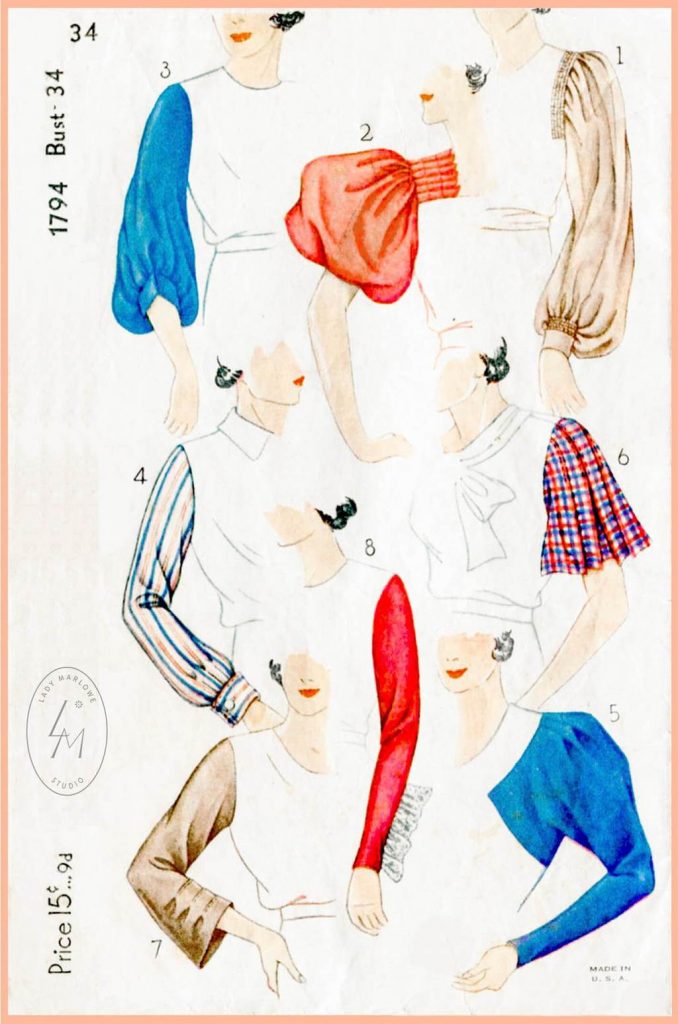
Well, short sleeves were taking up the place in the 1930’s fashion. They were gaining more and more popularity over time. But for the colder weather, women still had to rely on long sleeves. So, they had to go for jackets and coats with long sleeves. For the mature and plus-sized women, long sleeves were always a better choice.
Even the long sleeves had a puffed design around the shoulder or the cuff. Another style of sleeves came into notice around the end of the era. It was a push-up sleeve. This was basically a long sleeve that was pushed up around the forearm, which would create a puffed-up design in the cuff of the sleeves.
Necklines
There used to be variations on the necklines of dresses as well. The necklines and collars were high and didn’t have any cleavage at all.
Different dresses had different types of collars on them. Such folded pointed collars were a popular choice for day dresses. You can see the same collar pattern in the casual button-up shirts nowadays. The collar sizes varied greatly. Sometimes the collars were embellished with different kinds of bows and flowers around the neck. These really created a different look for every individual dress.
Broad shoulders were the trend back then. Women would prefer wide shoulders with a high neckline. They used to use different kinds of attachments that would help them get broad shoulders. One of them was Yokes, a sort of seam that runs between the shoulder on the upper chest. There were varieties here as well. Some of them were done with a patch of smocking, and some of them were done with a patch of shirring. These devices were used on the top of shoulders, collars, and sleeves to increase the size of the shoulders visually.
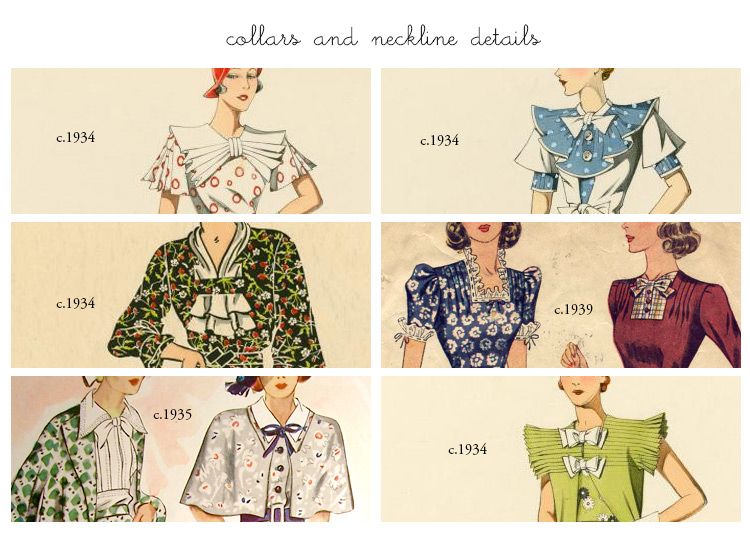
For the necklines, there were many choices as well, such as shallow V necks, boat necks, square necks, and so many more. Mandarin collars were also popular among women of the ’30s. Along with this, some dresses had a deeper neckline as well. They used to have a false vestee underneath, which made it look like having two layers on the dress.
Plus-size fashion became a real thing in the ’30s. So, they went ahead with a different approach with the shoulders. They didn’t opt for the full shoulder trend. The V neck and the false vestee was more of a popular choice in the plus size fashion for women. They chose this style and shape because it didn’t add any puff in the shoulders, which would have been a disaster for the plus size women. The Sleek and slim silhouette was the popular choice of the fashion trend for the plus size fashion back then.
Bodice
The most evident change in fashion of the ’20s and ’30s came in the waistline of women’s dresses. Before the depression era, women used to wear dresses that were preferably loose in fitting. But in the ’30s, women started moving towards dresses that would fit them perfectly and were a bit tight on the waistline. Women fashion started going much more feminine with that fitting line of clothing.
The fashion then wholly removed the boxy and loose-fitting dresses from the ’20s. Women were more into the high waist dresses. These waistlines were accented with a belt at times. This gave the dresses more of tight and perfect fitting. This actually made the women dresses look much more feminine, where the shape of the bodice is portrayed gracefully. The belts were mostly made of the same color and same fabric as the dresses. And they came in with the dresses with some exceptions.
The secret of getting that perfect and classy waistline was the seams. These seams were the secret behind getting a smooth, flat, and visually shrunk waistline. This, later on, became a classic choice of the 30’s clothing. A traditional 30’s dress featured either an upside-down v shape seam, or it would feature a half-moon shaped seam. These seams were pretty helpful in getting the room for the bust. On the other hand, the fabric that ran downwards used to be very snug and fitting, which barely had enough room for breathing.
Well, the bodice had a lot of embellishments on them, and they weren’t bland at all. They used to have different kinds of details and decorations that would completely change the visual of a dress. There were so many different items used for embellishment that the list runs too long. One of the unique ones was 3-D stuffed quilting they used to call it trapunto. Then there were designs made of embroidery, fagoting, metal studs, laces, pins, flowers, applique, and so many more. The goal back then was to keep the attention and focus on the top. So, these embellishments were used to hold the interest of people on the top rather than the lower part of the dress.
Right around the end of the decade, zippers became the new trend in dresses. They were used for fastening clothes and for embellishment purposes as well. So, they used to be quite visible and part of the decoration of a dress in the ’30s.
Skirts
From all the flared and loose-fitting skirts from the ’20s, women started moving towards skirts that used to have tight-fitting through the hips. They used to run long about calf length, and some would touch the floors as well. They didn’t use to have much flair or width on the bottom part of the skirt.
With the combination of different kinds of seams, the hips fitting were done with perfection. Pleat styles had various types of approaches towards them as well. The completely pleated 1930’s skirts became the classic touch of the 1930’s women’s clothing.
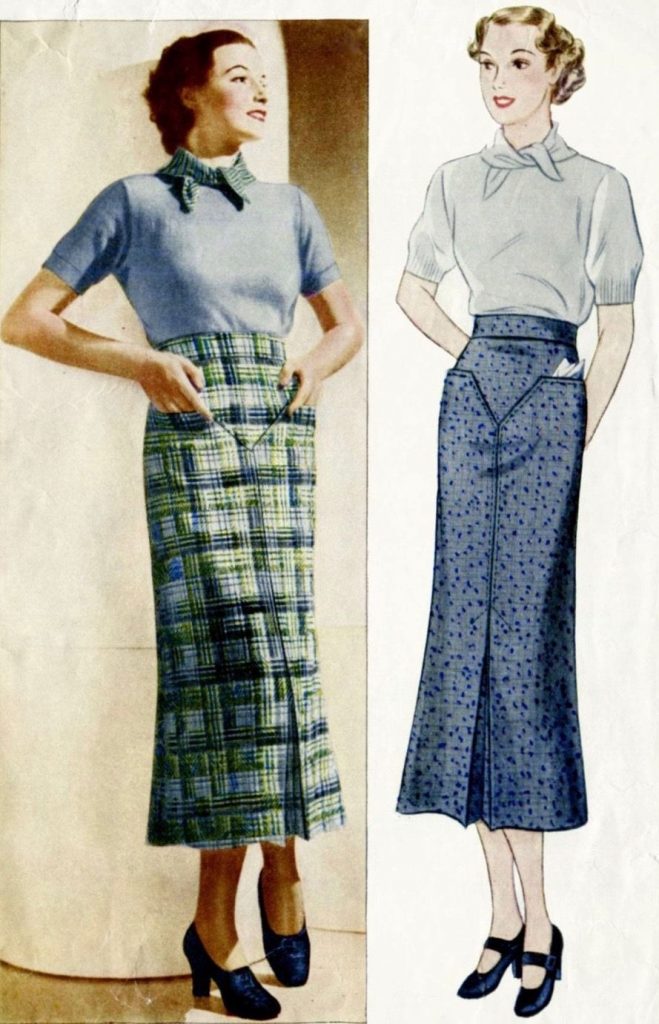
Taking inspiration from the 20’s drop waist, a more evolved version of skirts came into 30’s fashion. This one was much snugger in fitting and became very popular at the beginning of the decade. Another classic of the early thirties was the multiple panels design. This one used to have a curved-up design around the hips. It was a pretty elegant and classy choice of dress to wear.
As the focus of that era was to highlight the top part of the dress, the skirt didn’t have much going on with them. In fact, some of the skirts were very plain and simple. So, a gorgeously made top along with that simple skirt would have really made people focus on the top rather than the skirt itself. These were the most popular take on the skirts of the early thirties. Later on, the trend shifted towards tunics and peplums of different varieties.
Tunic and peplums
With the passage of time in the late 30’s tunic style, dresses came into action. These dresses were pretty much similar to other dresses but became a popular choice because of various reasons. One main reason was their versatility in usage. Women could wear this dress in the afternoon and in the evening as well.
The building was pretty simple. It basically had a long tunic length layer over the actual skirt of the dress. These came in different varieties as well, such as overhead, a coat like and with belts. So, women had versatile usage and also some different types of styles to go for variation at the same time.
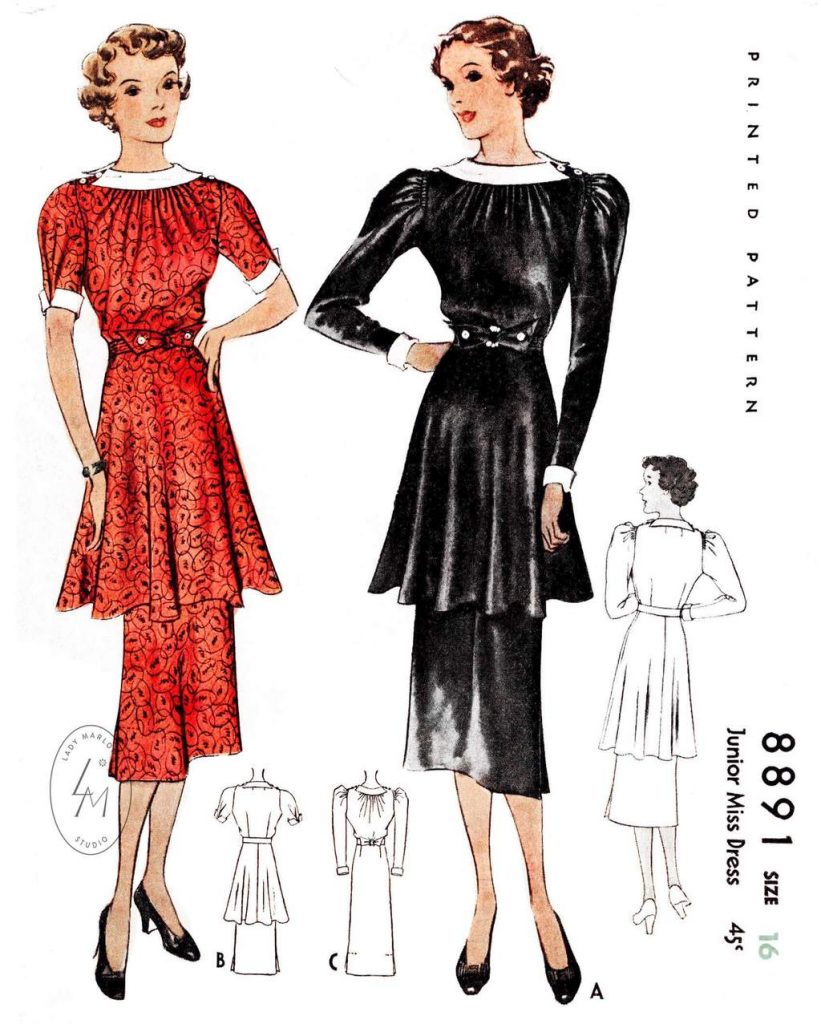
Along with the tunics, another fashionable dress of the ’30s was the peplum—a blouse along with a peplum, which is like an overskirt attached with the blouse. So, even though the dress looked like a two-piece dress, it was actually a one-piece dress. The length of the peplum is shorter than the tunic. This became a common choice in the early ’40s.
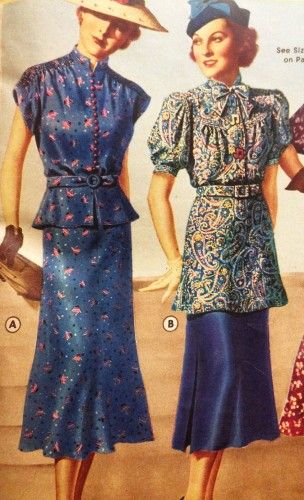
Fabric
In the 30’s dress patterns, one of the crucial parts was choosing the fabric. As the times weren’t much great economically, women had to go through the trouble with good fabrics. Around that time, rayon became the most popular form of fabric for making any kind of dress at all. Because it was cheaper than silk and was of good quality at the same time, so, it became an alternative to silk and wool.
Crepes were also a popular choice back then. For the spring, women preferred sheers or shantung. Whereas wool, satin, and rayon were used for winter. Cotton was also used in various dresses as well. These fabrics came in solid colors and sometimes with patterns as well. For the house dresses, they mostly came in solid colors. Also, for gorgeous gowns as evening dresses, women preferred to have a solid satin or rayon fabric.
For day dresses and afternoon dresses, floral patterns on the fabrics were popular. Also, sometimes there were stripes, polka dots, and many novelties print to catch the eye. There were many color choices, as well. In the fall, women moved towards darker colors such as plum, grey, green, blue, black, and brown. But in the spring, it used to be much lighter colors. They would go for pink, rose, tan, white, peach, yellow, orchid, sky blue, and medium blue.
So, these were the dress patterns for women in the 30’s. You can see many of the trends still going on, such as the maxi dresses with midi-length skirts. Most of the fashion of today is actually heavily inspired by the fashion of the ’30s.
1930’s men dress patterns
Men’s dressing patterns of the ’30s and modern times aren’t very different at all. In fact, the level of sophistication of men’s dressing patterns has actually gone down. The men’s fashion of the ’30s is considered the most elegant fashion era for men. This was the time when men turned men from boys. The boyish charm of the ’20s was replaced with a much more masculine form of fashion in the ’30s.
The look they came within the ’30s was basically the portrayal of men’s confidence in themselves. The most common men’s clothing was the suits men used to wear. Now, let’s check out the different parts of the men’s clothing.
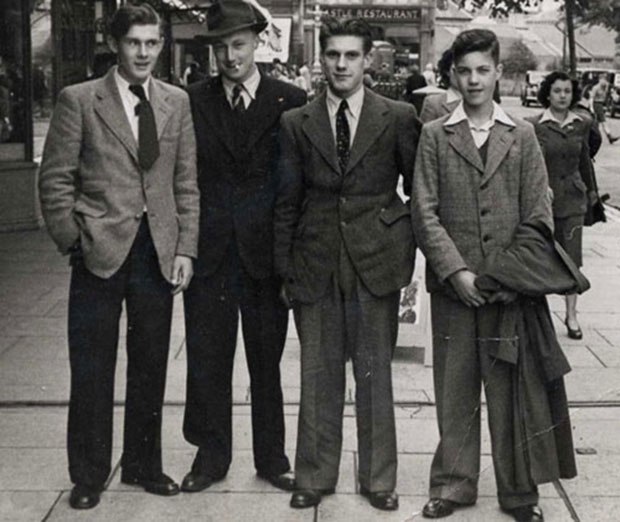
Suits
Except for the lower-class people, almost all kinds of men used to wear suits. And it’s the classic dress wear for men even now. Moving away from the colorful patterns of the ’20s, men used to go for much more subtle and more uncomplicated choices of suits. They could be varied with their cuts. Some had a casual look, and some were very formal.
For the suit color, there were quite a lot of choices. The medium blue was one of the most popular options and had a different vibe to it. Along with that, there were tan, beige, cream, and various shades of grey as well.
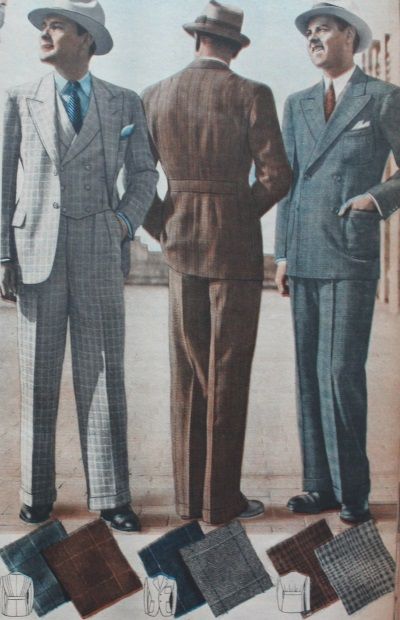
With different colors, there were options for different patterns too. The most iconic design for suits in the ’30s was the Glenn Plaid or Glen Urquhart check. There were some other patterns of suits, such as large plaids, checks, windowpane, herringbone. Also, there were birdseye, vertical stripes, vertical stripes, and many more.
Another crucial part of 1930’s suits were the vests. Vests became an integral part of men’s fashion in the ’30s. Every man wearing a suit had a vest inside with the same color and fabric as the suit. Some people would wear vests without any suits at times as well. The vests were mostly of solid colors, but at times you could see them come in patterns as well. The classic vests used to have five or six buttons to keep them fastened.
Another dimension to men’s fashion was the 30’s gangsters’ fashion. It was bold with striped double-breasted suits. They had created a different type of fashion genre for themselves, and many tried to copy that as well. It was the mafia look of that era and had a presence of elegance as well. Black or grey suits were the most popular choice of color for mafia suits.
Pants
Men’s pants saw an immense evolution from the ’20s to the ’30s. In the 20’s the pants used to be really baggy and had a lot of widths. It came down in the ’30s. Men were moving towards more of a fitting style of clothing, just like women. The suit pants used to have tight and high fitting around the waist. The pant’s length was of ankle height. The bottom part of the pants was still full, which is not seen much nowadays.

Another unique fashion trend for men in the ’30s was the trouser waistbands. They used to have an extra width band that didn’t have any belt loops. So, they came in with the perfect fitting for yourself, and you wouldn’t need any belts at all. This was pretty popular among the young men back then.
Shirts
Inside the suit’s men used to wear white shirts. But aside from the suits, men used to wear different types of shirts from time to time. There used to be various patterns and varied designs on the shirts. Some also came in solid colors as well. The models were mostly vertical stripes at that time.
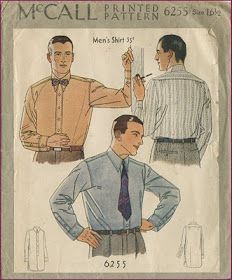
There were some color choices, such as blue, green, grey, mustard, yellow, rose pink, and white. The cuffs used to be single-button cuffs or double French cuffs. The detachable collars from the ’20s were replaced by soft attached spearpoint collars. Well, that was it from the shirts as men were mostly in suits, they didn’t have many varieties in the shirts of that time.
There you go, we have discussed in detail the 1930’s dress patterns. There is so much variation in the 30’s fashion that your choices will be endless. And as you have already noticed, most of the style of modern times is heavily inspired by the style from the ’30s.
I hope this article will help you in getting different dressing patterns ideas and come up with a new style of your own.

